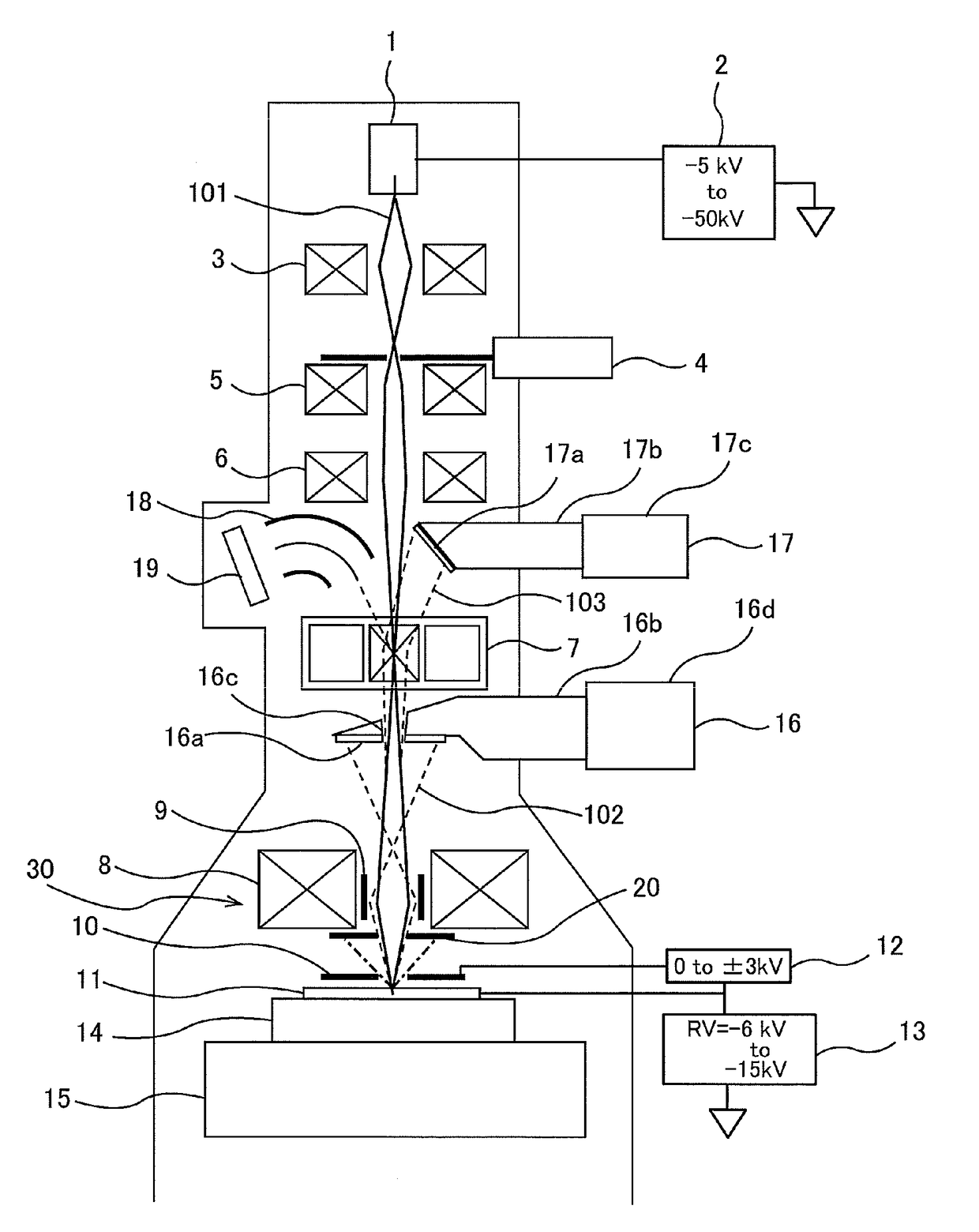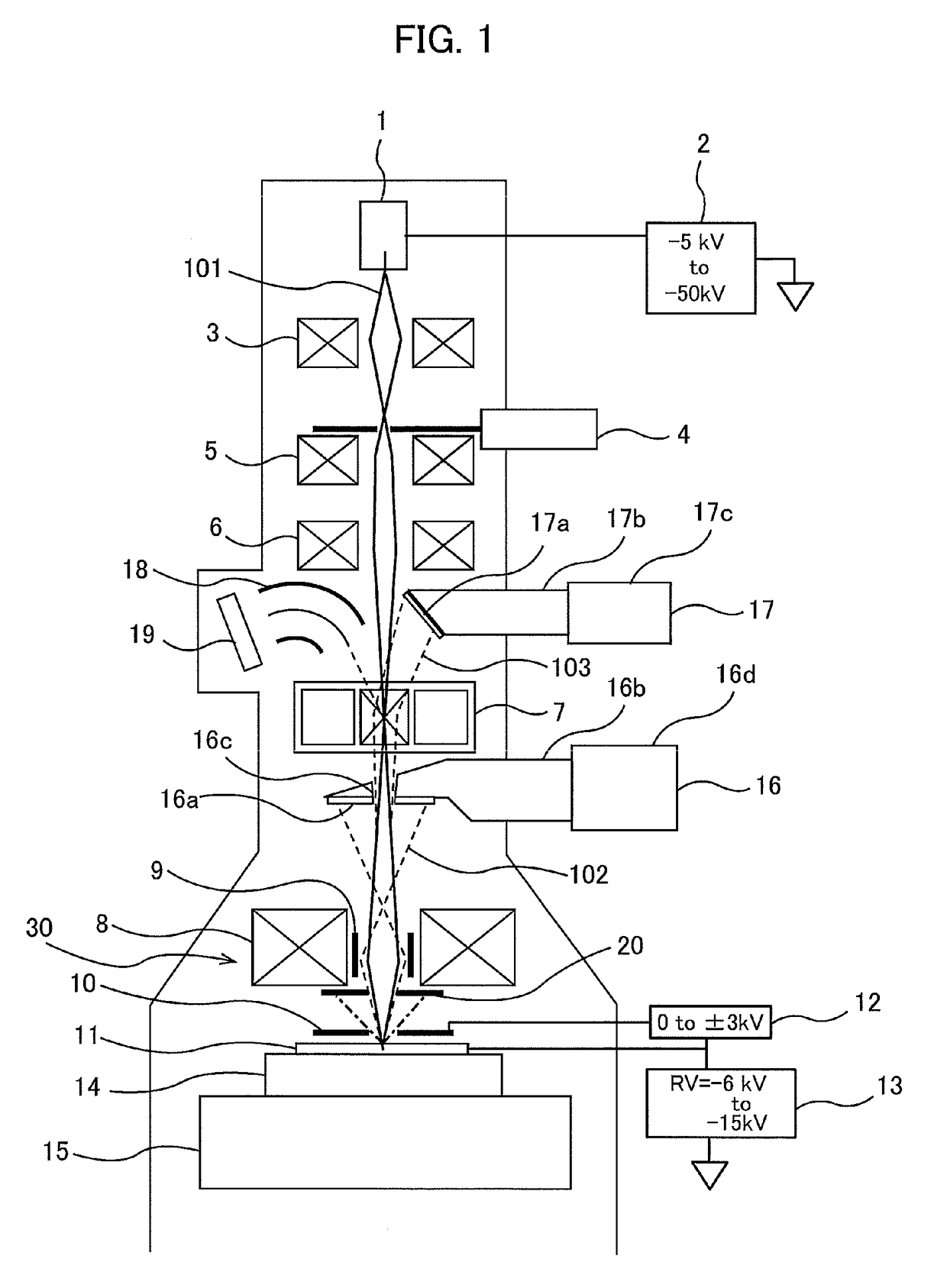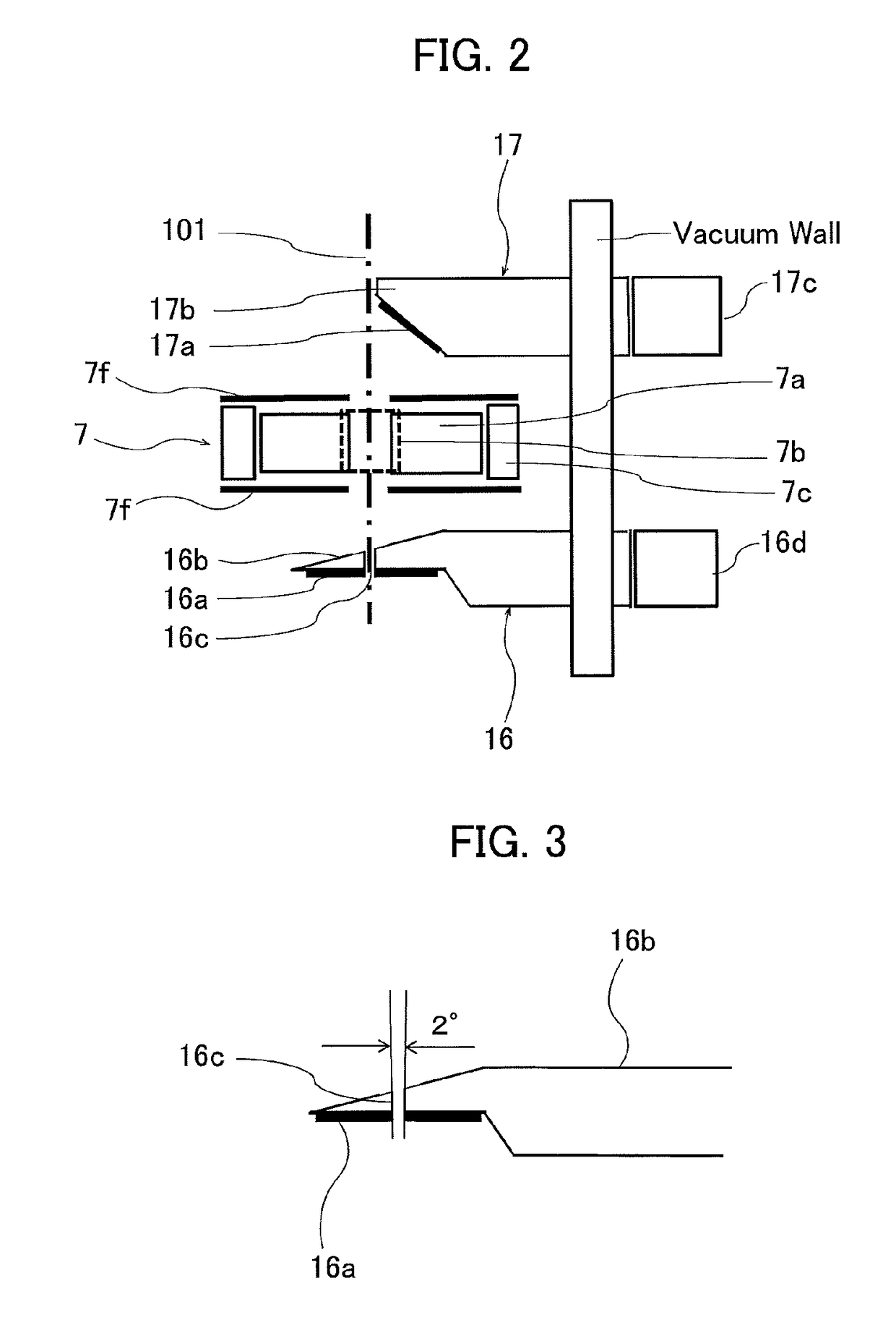Secondary particle detection system of scanning electron microscope
a scanning electron microscope and detection system technology, applied in the direction of basic electric elements, electric discharge tubes, electrical equipment, etc., can solve the problems of lowering resolution, revealing the resolution limit of inspection using optical microscopes, heavy damage to devices, etc., and achieve high beam current, low damage, and high resolution
- Summary
- Abstract
- Description
- Claims
- Application Information
AI Technical Summary
Benefits of technology
Problems solved by technology
Method used
Image
Examples
Embodiment Construction
[0065]FIG. 1 is a diagram showing a whole structure of an embodiment of a scanning electron microscope (SEM) according to the present invention. As shown in FIG. 1, the scanning electron microscope includes an electron gun 1 for emitting a primary beam (or an electron beam) 101, an acceleration power source 2 for accelerating the primary beam, three condenser lenses 3, 5, 6 for converging the primary beam, a current restriction aperture 4 for restricting a beam current, a retarding power source 13 for applying a retarding voltage, which is a negative voltage, to a specimen 11 to reduce a landing energy of the primary beam, and a combined objective lens 30 for focusing the primary beam on a surface of the specimen 11.
[0066]The electron gun 1 is a TFE electron gun. The acceleration power source 2 is coupled to the electron gun 1 so that the acceleration power source 2 can apply an acceleration voltage to the electron gun 1 so as to accelerate the primary beam. The specimen 11, such as...
PUM
 Login to View More
Login to View More Abstract
Description
Claims
Application Information
 Login to View More
Login to View More - R&D
- Intellectual Property
- Life Sciences
- Materials
- Tech Scout
- Unparalleled Data Quality
- Higher Quality Content
- 60% Fewer Hallucinations
Browse by: Latest US Patents, China's latest patents, Technical Efficacy Thesaurus, Application Domain, Technology Topic, Popular Technical Reports.
© 2025 PatSnap. All rights reserved.Legal|Privacy policy|Modern Slavery Act Transparency Statement|Sitemap|About US| Contact US: help@patsnap.com



